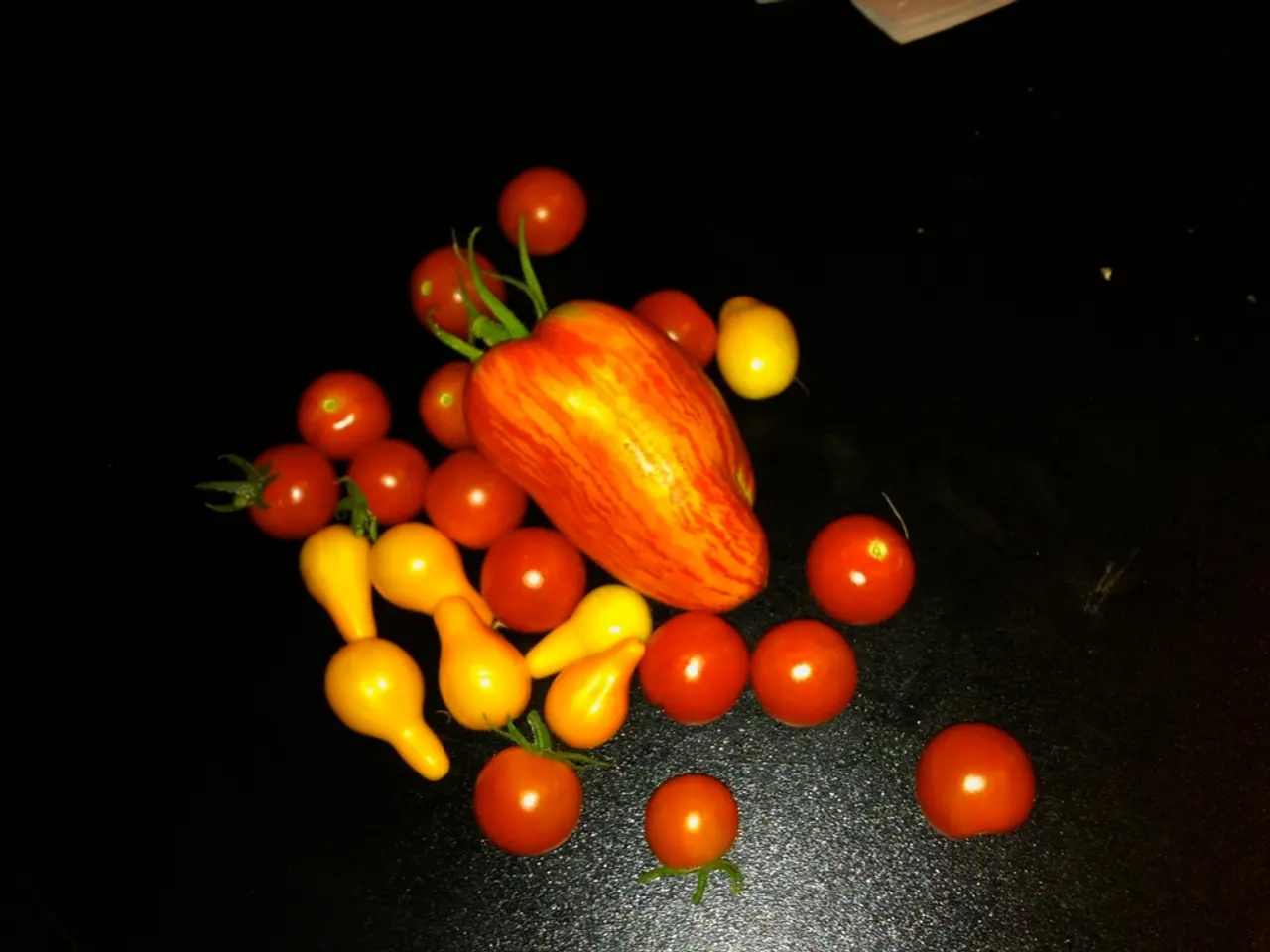Backyard Farming 101: Cultivating Fruits in Your Own Outdoor Space
Growing Easy Fruit at Home: A Beginner's Guide
Cultivating your own fruit garden can be a rewarding and delicious experience. Here are some tips to help you get started with easy-to-grow fruit trees suitable for beginners.
Choose Beginner-Friendly Fruits
Some fruits are more forgiving for novice gardeners. Peach trees (Elberta Peach), fig trees (Chicago Hardy Fig), mandarin oranges, blueberries, pomegranates, mulberries, and watermelon (in containers) are all good choices due to their relatively low maintenance and good yields.
Site Selection
Find a sunny spot with at least 6-8 hours of sunlight daily. Most fruit plants require well-drained soil rich in organic matter. Avoid low, waterlogged areas or heavy clay soils unless raised beds or mounds are employed for drainage. Blueberries need acidic soil (pH around 4.5-5.5), while many others prefer neutral to slightly acidic soils. Avoid planting under large shade trees or near concrete/lime-treated areas that alter soil pH.
Planting
Follow seasonally appropriate planting times (usually spring). Use healthy, disease-free saplings or cuttings. For example, fig and mulberry trees root easily from hardwood cuttings taken in dormant seasons. Space plants adequately to allow airflow and growth.
Caring
Keep soil consistently moist but not waterlogged. Mulching helps retain soil moisture and reduce weeds. Fertilize with balanced organic compost suitable to the plant species. Prune fruit trees to maintain shape and encourage air circulation. Monitor regularly for pests like aphids (common on apple and crabapple).
Pollination
Some fruits require cross-pollination (e.g., blueberries). Planting two or more cultivars ensures better pollination and larger yields. Others, like figs, often self-pollinate or do not require insect pollination to fruit well. Encouraging pollinators by having flowers nearby can improve fruit set.
Challenges
Common issues include pests (aphids, scale insects), fungal diseases, improper watering, and poor pollination. Early detection and organic pest control help reduce losses. Some fruit trees may have a learning curve, but starting with easier species reduces frustration.
Harvesting
Harvest fruits when fully ripe for best flavor—often indicated by color change, softness, or sweetness. For example, peaches are sweetest when allowed to fully ripen on the tree. Harvesting at the right time prevents fruit drop and spoilage.
Watering After Planting
Water thoroughly after planting to settle the soil and provide moisture for root establishment.
Pruning
Proper pruning promotes healthy growth, improves air circulation, and enhances fruit production. Prune during the dormant season.
Planting Techniques
Dig a hole twice the size of the tree's root ball. Place the tree in the hole and fill it with a mix of soil and compost.
Soil Requirements
The soil should be well-draining, rich in organic matter, and have a pH level between 6.0 and 7.0.
By following these tips, you'll be well on your way to enjoying homegrown fruits in your backyard garden. Happy gardening!
[1] Gardening Know How. (2021). Best Fruit Trees for Beginners. Retrieved from https://www.gardeningknowhow.com/edible/fruits/general/best-fruit-trees-for-beginners.htm
[2] The Spruce. (2021). How to Choose the Best Fruit Trees for Your Yard. Retrieved from https://www.thespruce.com/choosing-fruit-trees-for-your-yard-1414071
[3] Mother Earth News. (2021). Choosing the Best Fruit Trees for Your Home Garden. Retrieved from https://www.motherearthnews.com/organic-gardening/choosing-the-best-fruit-trees-for-your-home-garden-zm0z2102zraw
[4] University of California Agriculture and Natural Resources. (2021). Fruit Trees: How to Grow Fruit Trees. Retrieved from https://ucanr.edu/sites/UCMG/files/320547.pdf
[5] Cornell University Cooperative Extension. (2021). Fruit Tree Selection. Retrieved from https://blogs.cornell.edu/orchard/fruit-tree-selection/
Contributing to the guide on growing easy fruits at home, consider adding home-and-garden activities such as gardening to your lifestyle. For instance, nurturing a thriving home fruit garden can be an enjoyable way to bring life to your home-and-garden surroundings. Moreover, selecting beginner-friendly fruits like peach trees, fig trees, mandarin oranges, blueberries, pomegranates, mulberries, and watermelon creates a low-maintenance and rewarding gardening experience.




